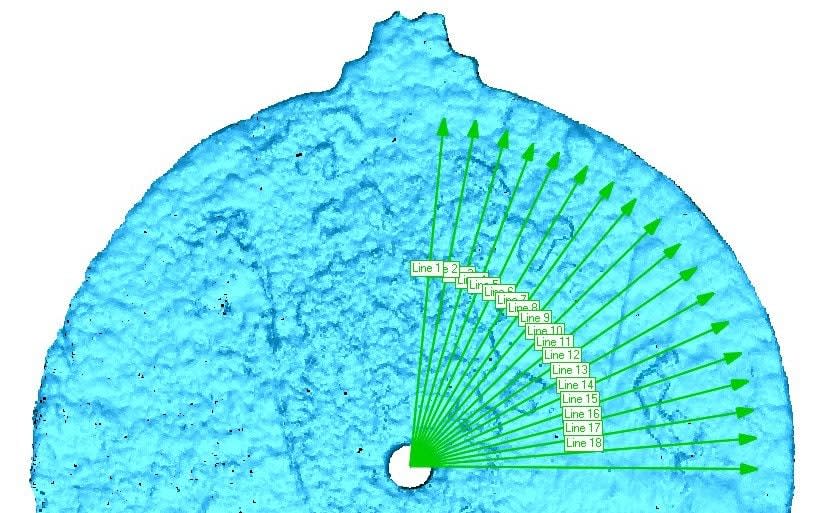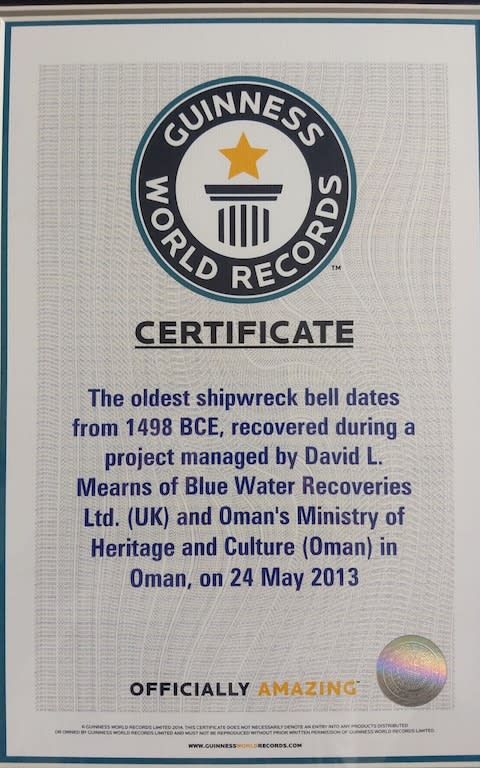World's oldest ship's bell and astrolabe discovered in 516-year-old Portuguese wreck off Oman

The world’s oldest ship’s bell has been discovered by a British team of scientists following recovery from the 516-year-old wreck of a Portuguese vessel found off Oman.
Guinness World Records have verified the artifact, along with a rare type of early navigation device, as the oldest of its type after marine archaeologists and historians identified the stricken ship as one involved in the pioneering days of East Indies exploration.
Commanded by the uncle of the famous explorer Vasco da Gama, the heavily armed Esmeralda was supposed to protect Portuguese trading posts during the nation’s fourth Armada to India, which set off from Lisbon in 1502.
Instead, captain Vicente Sodre sailed his vessel to the Gulf of Aden in order to loot and burn Arab shipping.
His ship, along with one other in the squadron, was sunk when a sudden storm tore them from their moorings and dashed them against the rocks in 1503.
The wreck was surveyed by a UK-based team in 2013 and the fractured bell subsequently found nearby under a boulder.
Tests revealed the bell bore an inscription including the date of 1498.
It was found alongside a rare example of an astrolabe, an early navigation device, which has also been certified as the oldest of its type in the world, dated 1496.

The thin 175 mm diameter disk weighing 344 grams was analysed by a team from the University of Warwick who traveled to Muscat in November 2016 to collect laser scans of a selection of the most important artefacts recovered from the wreck site.
Astrolabes are considered to be the rarest and most prized of artefacts to be found on ancient shipwrecks, with only 104 known examples in the world.
Prof Mark Williams said: “Using 3D scanning technology has enabled us to confirm the identity of the earliest known astrolabe, from this historians and scientists can determine more about history and how ships navigated.
“Using technology normally applied within engineering projects to help shed insight into such a valuable artefact was a real privilege.”
The artifacts were discovered by David Mearns of Blue Water Recoveries, the oceanographer who in 2001 located the wreck of the Second World War Royal Navy battleship HMS Hood, and Bismark, the German ship which sunk it.
“Without the laser scanning work performed by WMG [Warwick] we would never have known that the scale marks, which were invisible to the naked eye, existed,” he said.
“Their analysis proved beyond doubt that the disk was a mariner’s astrolabe.
“This has allowed us to confidently place the Sodré astrolabe in its correct chronological position and propose it to be an important transitional instrument.”
Until these new discoveries, the oldest official ship's bell was dated 1509 and carried aboard the Mary Rose, which sunk in the Solent in 1545, meanwhile The oldest known astrolabe was from from another Portuguese shipwreck, tentatively identified as the Bom Jesus that sank in 1533 off the coast of Namibia.
They are described in a study published in The International Journal of Nautical Archaeology.

 Yahoo News
Yahoo News 
